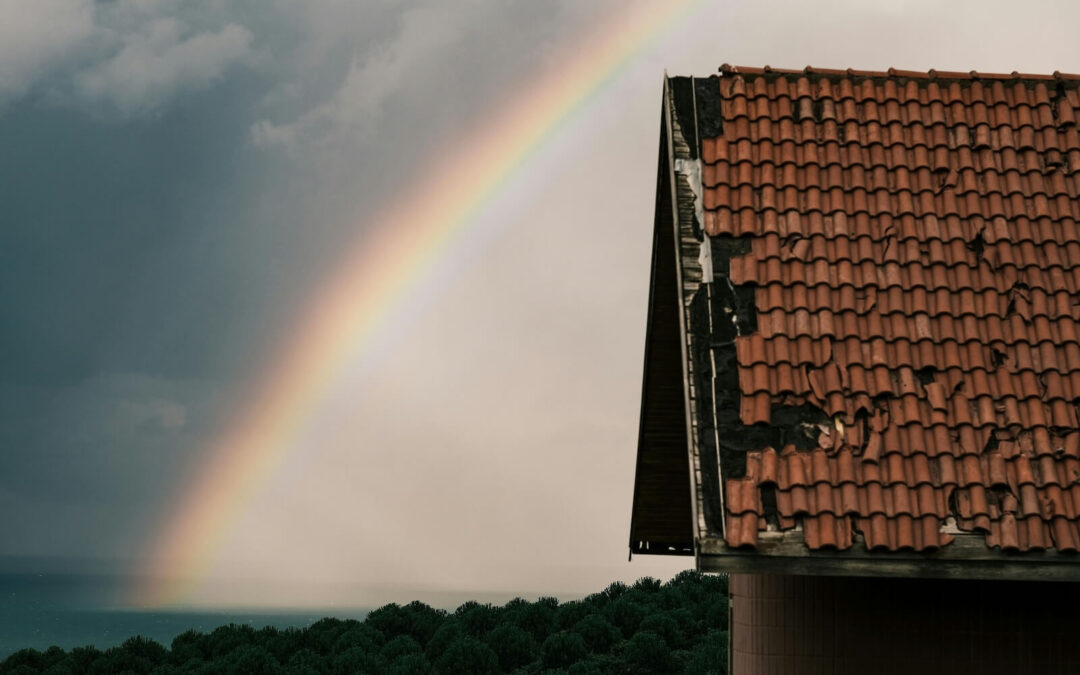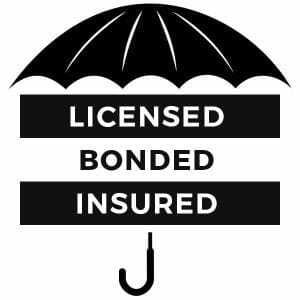Severe weather, particularly storms, can cause significant damage to a commercial property, especially its roof. Roof storm damage is one of the biggest concerns for commercial building owners. Whether it’s hail, heavy rain, or gusty winds, your commercial roof is constantly at the mercy of the elements. While commercial roofs are built to withstand the weather, they’re not invincible.
Over time, storms can lead to leaks, structural problems, and other costly damage. Commercial roof damage can be expensive and interrupt your daily operations. This guide will walk you through the common signs of roof storm damage, how to assess your roof after a storm, and what steps to take to protect your business. Let’s dive in!
How Storms Can Damage Your Commercial Roof
Storms don’t just bring bad weather — they can also cause severe damage to your roof. The severity of the damage depends on what type of storm you’re dealing with, but it’s important to know the signs of damage, whether visible or hidden.
Here are some common ways storms affect commercial roofs:
- Hail Damage
Hail can cause immediate and noticeable damage. Big chunks of ice can crack, dent, or even puncture your roof materials. If you’ve had a hailstorm, you must check for any visible marks on your roof, especially on shingles, metal panels, or flat roofs. - Wind Damage
High winds pick up the loose edges of your roofing materials, causing them to tear or get pulled away entirely. Winds can also carry debris, like branches or rocks, that can strike and damage your roof. Even though the damage may seem minor initially, wind can lead to long-term issues if not addressed quickly. - Rain and Flooding
Heavy rainfall is common in storms, but when water doesn’t drain properly, it can cause significant problems. Water buildup can lead to leaks or flooding inside your building. Over time, pooling water can weaken the roof and cause structural damage. Ensuring your roof’s drainage system is clear and working correctly is crucial. - Snow and Ice
If you’re in a colder area, snow and ice can be a huge concern. Accumulated snow can weigh down the roof, while ice dams can form at the edges, causing water backups that don’t allow water to drain. Water can seep under the shingles and spread from there, causing future structural problems.
How to Spot Roof Storm Damage
After a storm, you want to act quickly to check for damage and carefully inspect your roof to avoid expensive issues in the future. Here’s what to look for when inspecting your roof:
- Missing or Broken Shingles (Asphalt Properties)
Wind or hail can tear off or crack shingles. Look for broken shingles or ones that have blown away in the storm, as they can make the roof vulnerable to leaks. - Visible Dents or Cracks in the Roofing Materials
Especially after hail, check for dents, cracks, or punctures, particularly in metal roofing. These areas are at risk of letting water seep through. - Leaks Inside the Building
Roof storm damage is most noticeable when water leaks inside. Look closely for water stains on your ceilings or walls; if you see them, there’s a good chance the roof has been compromised. - Debris on the Roof
Debris like branches, leaves, or even roofing material could be left behind. These things can cause additional wear and tear on your roof, block drainage systems, or even potentially puncture the roof membrane. - Clogged Gutters or Downspouts
Gutters can get clogged, preventing much-needed water from draining off your roof. This can lead to water backing up on the roof, increasing the chances of leaks.
What to Do After a Storm: Assessing Your Roof
Once the storm passes, it’s time to assess the damage. Here’s how to do it:
- Visually Inspect
Start by looking at your roof from the ground, or use interior building access to walk a flat roof. Look closely for apparent damage, such as missing shingles, peeling membrane, or punctures caused by HVAC or other pointy objects. Be cautious about getting on the roof unless it’s absolutely safe. - Check for Leaks Inside the Building
Head indoors and check your ceilings and walls for water stains. If you notice any leaks, you may need to act quickly to avoid further damage. - Call a Professional
Bringing in a roofing expert after a storm is always a good idea. A professional will have the knowledge and tools to spot hidden damage such as roof structural integrity issues.
Protecting Your Roof from Future Storm Damage
While you can’t stop storms from happening, there are things you can do to minimize the damage to your commercial roof:
- Schedule Regular Roof Inspections
Make sure you inspect your roof regularly, especially after a storm. It’s also a good practice to have a professional check your roof at least once a year to catch any early signs of wear and tear. - Maintain Your Roof’s Drainage System
Clear out gutters and downspouts to ensure proper water drainage. Regular cleaning can prevent clogs that may cause water to pool on your roof. - Reinforce Your Roof
Bring in reinforcements, depending on your location and roof type. It may be worth investing in additional reinforcements. This could mean using more durable materials or reinforcing flashing and seams to prevent wind or water damage.
Why You Need a Professional Roof Inspection
You can do a basic inspection, but a professional roofing contractor will give you a much more thorough understanding of the damage. A pro can identify issues you may not see, like water damage or structural weaknesses that could worsen over time.
In addition, having a professional assess the damage is helpful when filing an insurance claim. A contractor can document everything, including taking photos and providing a detailed report, making the claims process smoother.
Protect Your Commercial Roof with Integrity Roofing
Timing is everything regarding storm roof damage to your commercial building. If you have a leak or damage, and more bad weather comes, things will only get worse. Integrity Roofing specializes in comprehensive roof inspections and repairs to ensure your commercial building stays safe and secure. Whether it’s repairing storm damage or reinforcing your roof for future storms, we’re here to help.
Contact Integrity Roofing today to schedule a professional inspection and ensure your commercial roof is storm-ready.






